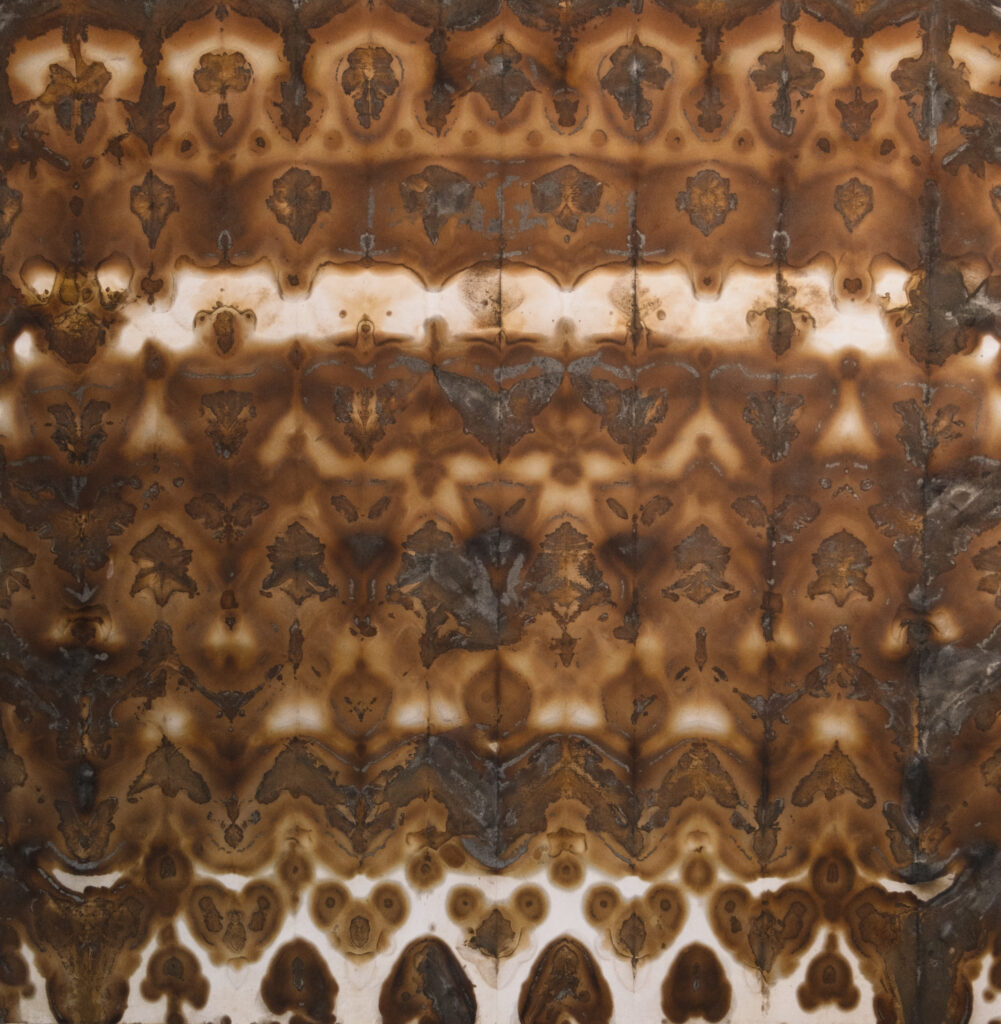For the next year+ I’m studying the black walnut trees on my street in an effort to build a better relationship with the non-human world around me.

Why
I’ve foraged nuts from these trees for a few years and want to enter into a more reciprocal relationship with them, which I’ll talk about more in later sections.
Aside from black walnuts’ art applications, part of what has drawn me to these trees is how they’re utterly ordinary, and thus easily overlooked, in the city’s landscape. They are not part of some sacred or unique location or stand of trees. They’re everyday trees you might never consciously notice while running around. But there is sacred in the mundane. In order to save ourselves (and thus reduce the climate harm we cause), we need to find beauty in the ordinary world around us.

Past
My relationship with these trees started with curiosity. About a decade ago, I moved into my current apartment. I walked past those trees for months without a thought. Then, suddenly, these green balls started dropping from the trees. They had a spicy, lime-like scent and were shaped and colored like rounder than usual limes. I don’t remember if it was that summer or years later, but I eventually learned that these unexpected and curious things were black walnuts. I’ve taken black walnut hulls medicinally, so it was a shock to see where that herbal medicine came from. By shock, I mean a shock to the colonized portions of my mind that were shaped by the conveniences of capitalism obscuring how things are made.
A few years ago, I got into natural dyeing. Knowing that for many years, no one has been picking up these walnuts, I foraged as many as up to a quarter of the walnuts the trees dropped. I primarily used them to make ink. Since it was my first time making ink, I can’t say that I did a particularly good job, but I’m hoping to improve.
Since then, I haven’t had time to really work with the walnuts, and there was at least one year where the trees produced almost no nuts. But I was able to gather at least a few walnuts a year, and they’re currently sitting in my freezer so as the protect their dye compounds from degrading.

Present
This spring, I began photographing the trees and harvesting the soil at the base of them for chromatograms. I try to do so at least once a month. Last month I also moved to harvesting other parts of the trees, like leaves, for cyanotypes and chromatograms. Around that time, I also finally finished binding a new sketchbook, which I’m using primarily as a tea and tree journal. While I do not have the goal of observing the trees using strict scientific protocols as one would in a lab journal, it will be valuable to record my observations.
So far, I’ve been moving at a slow pace and only implementing one new way to observe the trees at a time. I’m moving on crip time. And I’m letting my observations inform my next moves. Which is why this project has expanded from my initial one year goal to over a year.

Possible Futures
You can make a photograph of sorts on leaves by placing them under a digital negative and exposing it to UV light. It works better on some species of leaves than others, so who knows how well it will work here.
I’ll be collecting fallen twigs and branches, which I’ll then burn to make charcoal. This will start off as just burning one tip of the twig so it can function as a sort of charcoal pencil.
In TCM, baoding balls are used to massage acupoints in the hand. You may be more familiar with the metal version that “sings”, or produces a sound when moved around the hands, but they’re traditionally made from walnuts. A comrade and I are going to make balls of our own, which will involve foraging the walnuts, removing the hulls from around the walnut shells, and likely sanding down any pointy bits. The more they’re used, the walnuts should develop a patina. More on walnut anatomy in a later post!
And of course, it would be nice to do some ink making and dyeing with the walnut hulls.
What do you think? Thoughts on possible experiments or ways of being in harmony with these trees?

Leave a Reply